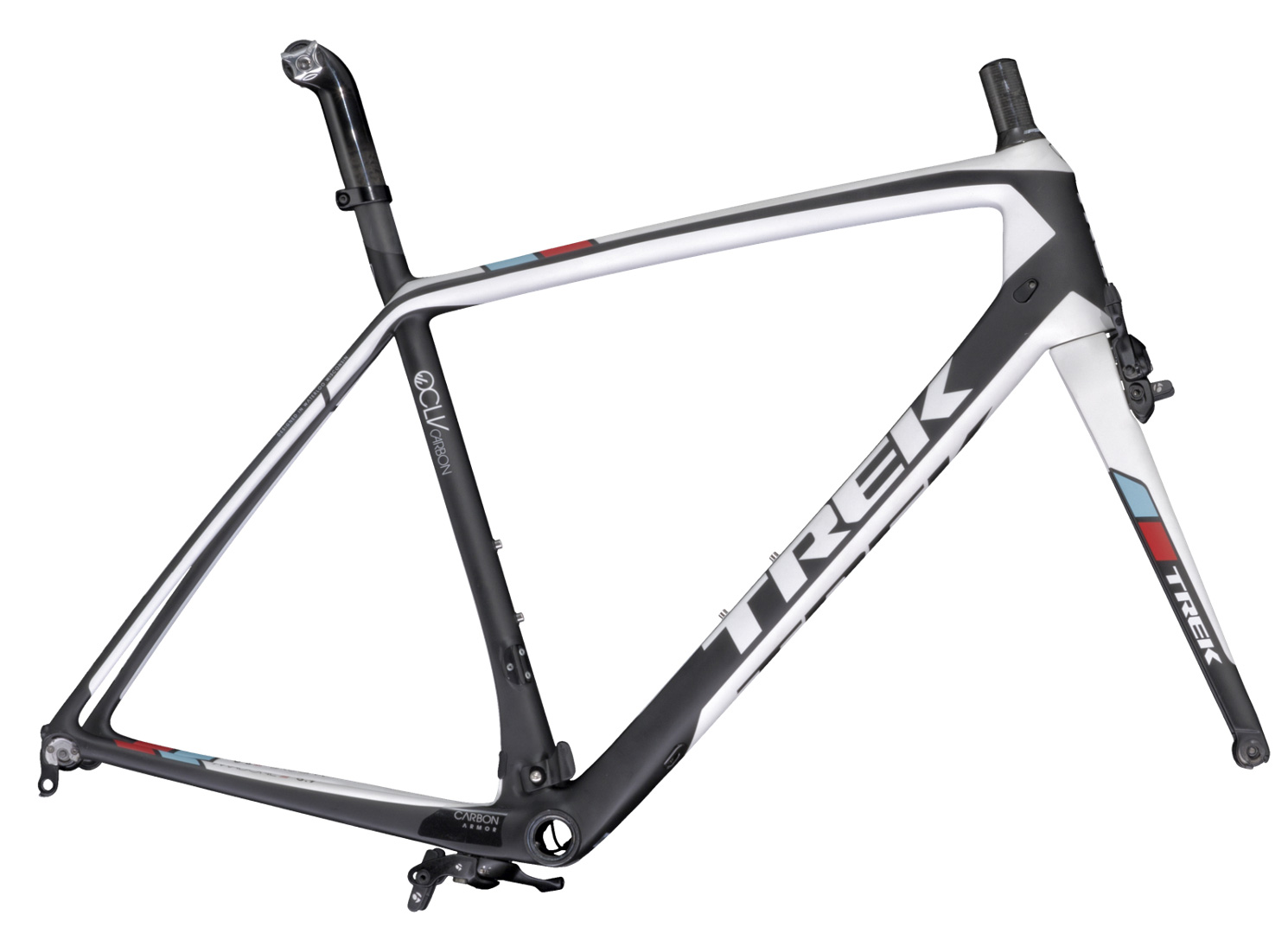| Home | Introduction |
Aerodynamics | Power & Energy | Gearing &
Drivetrain |
Bibliography |
The Importance of Material Choice in a Bike Frame:
A Trek Madone 5 Series OCLV Carbon Fiber frame, a very high-tech frame with high performance materials

Photo Courtesy of http://www.westmichiganbike.com
Combine with the technology of the present as wells as the great knowledge of high performance materials, it is a reality for manufactures to create very high end bikes that are stronger, faster, and more efficient than that of bikes existing just a decade ago.
Material choice in bikes is a major factor in improving a cyclist's performance; according to brightspoke.com, there are four main areas of focus in which bike manufacturers take into account to make their bikes the very best, they include:
1) Stiffness of the
Material – Stiffness of the frame is a very important
factor in cycling, its can change the ride characteristics
and even the efficiency of how power is transfered to the
wheels. If a frame is made of a material that is relatively
elastic, it will have better ride quality (i.e cushions
bumps and imperfections in the road well basically acting
like a shock absorber) however though, when a cyclist
pedals, especially during an attack or sprint, an elastic
frame will tend to flex causing some of power from the
cyclist to be lost in the torque that is put on the elastic
frame. If the frame is made of a stiffer material, it will
have the opposite qualities of an elastic frame.
Therefore it is very important manufactures find a balance
between both of these qualities.
2) Strength of the Material – Strength can be considered a subjective term; in this case, we will focus on the breaking strength of a material. Strength can be defined as the ability of a material to have specific point in which it fails after a load or force placed on the material is greater that point; this point is known as the "yield strength". There are two classifications of materials: brittle and ductile materials. Brittle materials are seen to be materials that breaks before it deforms; an example of a brittle material is carbon fiber. A ductile material is a material that tends to deform before it reaches it breaking point; an example of a ductile material is aluminum. Strength tends to be a property that doesn't affect quality of ride or the direct performance of the cyclist, however its an important factor to consider as it can help protect a cyclist in an event a crash occurs (i.e you wouldn't want a bike to break into sharp pieces during a crash.)
3) Fatigue Strength – In the above explanation of strength, we focused on the idea of "static" strength or the ability for a material to withstand a maximum load at a specific moment. Fatigue strength however, focuses on the idea for a material to be able to withstand cyclical loads or many loads. As the saying goes "nothing last forever" also applies to materials; over time and use they tend to degrade. Therefore it's important to consider fatigue strength especially among moving or mechanical parts such as the crank or drive train of the bike.
4) Weight – Weight is considered to be one of the most important factors that cyclist focus on (next to aerodynamics). Basically weight is considered to be the amount of mass he material has per unit of volume. In cycling, cyclist prefer to have a bike that is lighter especially if they are planning to do a lot of hill climbing.
2) Strength of the Material – Strength can be considered a subjective term; in this case, we will focus on the breaking strength of a material. Strength can be defined as the ability of a material to have specific point in which it fails after a load or force placed on the material is greater that point; this point is known as the "yield strength". There are two classifications of materials: brittle and ductile materials. Brittle materials are seen to be materials that breaks before it deforms; an example of a brittle material is carbon fiber. A ductile material is a material that tends to deform before it reaches it breaking point; an example of a ductile material is aluminum. Strength tends to be a property that doesn't affect quality of ride or the direct performance of the cyclist, however its an important factor to consider as it can help protect a cyclist in an event a crash occurs (i.e you wouldn't want a bike to break into sharp pieces during a crash.)
3) Fatigue Strength – In the above explanation of strength, we focused on the idea of "static" strength or the ability for a material to withstand a maximum load at a specific moment. Fatigue strength however, focuses on the idea for a material to be able to withstand cyclical loads or many loads. As the saying goes "nothing last forever" also applies to materials; over time and use they tend to degrade. Therefore it's important to consider fatigue strength especially among moving or mechanical parts such as the crank or drive train of the bike.
4) Weight – Weight is considered to be one of the most important factors that cyclist focus on (next to aerodynamics). Basically weight is considered to be the amount of mass he material has per unit of volume. In cycling, cyclist prefer to have a bike that is lighter especially if they are planning to do a lot of hill climbing.
Next Page